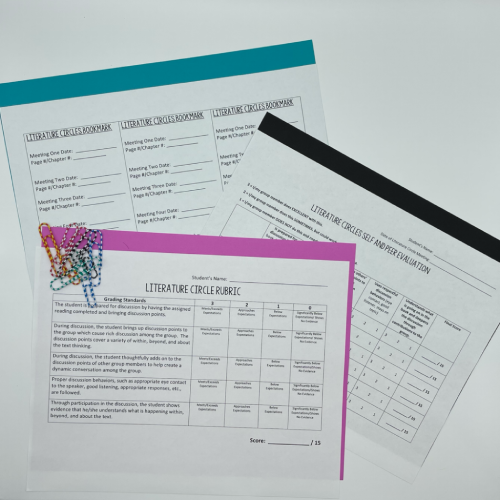What happens when there are not limits to what students can/can’t learn about in your classroom? What happens when the teacher stops dictating what students have to write about? It seems I learn this lesson again and again, and even though I would like to think I allow my students a substantive amount of choice within the classroom, I found out I need to keep opening myself up to give them more. As part of the Common Core State Standards, 8th grade students are required to write “to explain.” In Civics, students are learning about the Civil Rights Movement, and I thought what a great opportunity it would be to have students research a person, place, event, or idea associated with the Civil Rights Movement as their research paper. Well little did I know I would create an uproar in my classroom when I introduced this concept. I had students raise their hands and say things like, “I thought our research would be on something we were truly interested in.” “You told us we would always have choice.” “I’ll be so much more excited about my research if it’s on what I want to research.”
I realized after my students so graciously shared their opinions with me that I was being hypocritical with what I wanted them to do. All year I have been preaching the importance of driving your own learning, establishing intrinsic motivation, and exploring your own interests, and all of a sudden I was pushing them into a corner and severely limiting their choice. I scrapped my lesson plan for the day and came up with a new minilesson on the fly, “Writers write metacognitive questions so that they can explore their wonderings.” I shared with them questions I had about life in general:
-What function do dogs’ kidneys have in their bodies? What happens when puppies are born without properly functioning kidneys? (My last dog, Inga, died of kidney failure at only one year of age.)
-Why are females more likely to tear their ACL’s than males? (I tore both of my ACL’s while playing high school basketball and had reconstructive surgeries.)
–How do I increase traffic to my blog? (This is always something I wonder about to spread the word of my blog further than it is spreading now.)
-What are the most effective reading interventions to use with middle school students? (Wisconsin’s new RTI model is making me want to research all of the possibilities to most effectively reach students’ needs.)
-What is clean eating? (This has been a term that I’ve read in so many health articles in magazines lately, and I’m interested in knowing more.)
I then gave students time to write their questions they were wondering about. From there, they did some writing in their Writer’s Notebooks about what they know about these topics, what they want to learn about the topics, and why they were interested in their topics. Students then talked about their top three topic choices in small groups and received feedback from their peers about what they would be most interested in reading about as an audience. Students also took a day to do some Internet searches and online database searches on their top three topics to see what type of information was accessible to them about their topics. It was then students came to the conclusion of what they would write about. I’m a big believer is pre-writing and giving students time to experiment with multiple topics before making them commit to one. In the past when I have had students pick a topic right away, I’ve found several days into research several students want to switch their topics. This is greatly reduced when students have time to experiment and get peer feedback about their top topic choices.
So what did students come up with? Here are a few of their topic choices:
-What is the science behind a hockey puck?
-Why does the sky change colors?
-What are the best ways for adolescents to properly care for their feet to prevent foot problems in adulthood?
-What are ways to prevent concussions?
-How was gymnastics invented?
-How was soccer invented?
-How do genetics play into athletic talent?
-Is eye color or hair color linked to intelligence in any way?
-What are the best places to visit in Washington DC?
-How do dogs communicate with one another?
-What is the truth about the Bermuda Triangle?
-What important things are there to know about The Grateful Dead?
-What is artificial intelligence?
-What invasive species inhabit Lake Superior?
-What fish are native to Wisconsin?
As you can see, the wide variety of topics shows students selected a topic that was relevant and interesting to their lives. I saw a spark and excitement in 8th grade students about beginning their research, which let’s be honest, is not always the easiest task to accomplish! I do not regret for a second allowing students the choice to pick their research topics. What did it hurt me to give up control? Absolutely nothing! If anything, it is going to make reading the research papers MUCH more interesting for me!
When students began researching their topics, they actively searched to find as much information as possible and not ONE student changed their topic. We are now at the point where we are starting to write pieces in our Writer’s Notebook of the research paper in preparation to write our Discovery Drafts. Here is an anchor chart from our day we discussed introductions:
Don’t be scared to let go of control and allow students choice in their writing. The end result will be well worth it!







